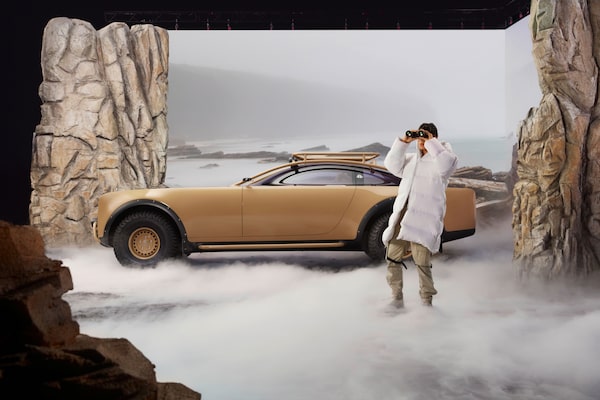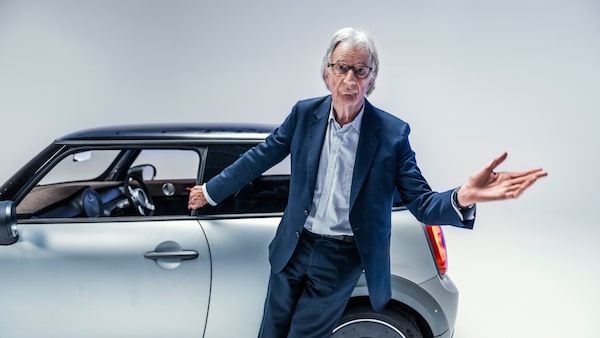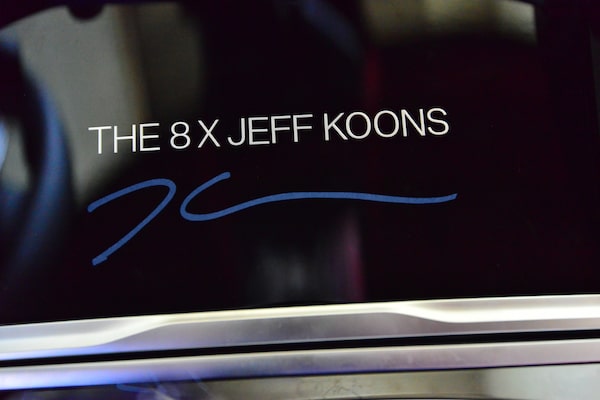
Mercedes unveiled a battery-powered coupe called Project Maybach in early December.Mercedes-Benz AG - Global Commun/Supplied
Car companies used to sell cars by touting dazzling chrome, immense horsepower and invented-luxuries like rich Corinthian leather. That’s not enough these days. The auto industry is looking to attract a new cohort of buyers by turning to the worlds of art and fashion in the hopes of breaking back into pop-culture consciousness.
Old car companies want you to know that they totally get it. They want to be cool again, part of the zeitgeist, and, well, they want to look good.
It’s a relatable instinct for anyone who ever wanted a new outfit for the first day of school, but the auto industry’s agenda runs deeper than merely fitting in.
There’s been a spate of collaborations over the past 18 months between automakers and hypebeast-approved fashion brands including Palace, kith, Supreme, Aime Leon Dore and designers such as Yohji Yamamoto and the late-great Virgil Abloh. Ferrari threw its first fashion show in June, and Jeff Koons – the artist behind the $91-million Rabbit sculpture – announced he’s making a limited-edition car for BMW. Fashion designer Paul Smith did an eco-friendly concept for Mini, while Porsche let a pair of Toronto-based artists use two $120,000 cars as a canvas.

A model poses in clothing from BMW's recent collaboration with New York City fashion brand Kith.Supplied
Car-company branded clothing is usually embarrassing to wear in public, but these new designer hoodies, t-shirts and hats aren’t cringeworthy. Some of them are actually good. The designer pieces generally sold out quickly and can now only be found on auction websites for sky-high prices. (A beige x BMW baseball cap is trading on fashion resale site StockX for more than $300, versus around $100 for a typical hat from the same brand.)
When we spoke in September, Gorden Wagener, chief designer officer at Mercedes-Benz said, “I see Mercedes not as a car company; I see Mercedes as an international design and luxury company. I want to elevate Mercedes out of the automotive worlds into different fields of luxury.”
Wagener said it was Virgil Abloh, then Louis Vuitton’s artistic director, who approached him about doing a collaboration. The pair made two concept cars together. The second, a battery-powered coupe called Project Maybach, which was unveiled in early December, just days after Abloh’s sudden death following a private battle with cancer. The car exploded across the internet, and was widely covered outside of the automotive press by fashion sites and magazines, putting Mercedes-Benz in front of an audience for whom cars – while perhaps a necessity – are less of a priority than clothes, art and Uber-eatsing something good for dinner.
As millennials become the biggest car-buying demographic, making them want a particular car, rather than simply needing a car, is a challenge.
Collaborations with brands outside the automotive realm are a way to be part of conversations on big issues, said Tara Powadiuk, marketing director at Volvo Car Canada. To mark World Car Free day in September, for example, Volvo tapped Vancouver-based footwear company Casca Designs to make a limited run of sustainably-made sneakers. “We were trying to think about how we could be relevant in this conversation,” said Powadiuk. The Volvo-branded shoes, which were meant to encourage people to walk and be active, all sold out.

Volvo tapped Vancouver-based footwear company Casca Designs to make a limited run of sustainably-made sneakers.Supplied
Today, marketing vehicles is different than it used to be, she said, explaining that marketing is driven by product design and technology, but equally by consumers’ consciousness around the brands they choose.
“As Volvo Cars, we recognize we’re a part of the problem and we have to be a part of the solution,” Powadiuk said.
Paul Smith, who launched his eponymous fashion label in 1970, didn’t want to do something “decorative” when he was approached by Mini about collaborating on a project. “There’s a couple hundred people in my company and most of them are young, and they’re very conscious about climate change, sustainability,” Smith said. The idea for the Mini project was to use only sustainable materials and reduce waste by stripping a car down to its essentials. The resulting concept, dubbed the Mini Strip, isn’t for sale, but did make a splash in fashion and lifestyle spheres.

Fashion designer Paul Smith did an eco-friendly concept for Mini.Supplied
Putting a designer label on a car is nothing new. Paul Smith designed limited-editions of the Rover Mini in the 1990s. Peugeot paired with Lacoste in the ‘80s, putting some of the fashion label’s green crocodile logos on the 205 hatchback. And in 1979, Cadillac sold a limited-edition Gucci Seville, a neoclassical hunk of American metal and Italian leather.
In the past, car companies turned to fashion labels to help make cars – often mediocre ones – desirable. Now, however, the industry is in the midst of an upheaval not seen since the early 1900s. Long-established automakers are having to talk about pollution, revamp their businesses to make electric vehicles and cut emissions while fending off fresh competition from overhyped startups. In that context, just being in the same sentence as Supreme or Palace makes a brand seem cool(er). So, the collabs and drops are coming thick and fast. Car companies aren’t looking to sell cars, they’re looking to gain back some street cred and cultural cachet – in order to sell cars, clothes, sneakers and anything else. Judging by how quickly this co-branded merchandise usually sells-out online, it seems to be working.

Jeff Koons – the artist behind the $91-million Rabbit sculpture – announced he’s making a limited-edition car for BMW.Peter.Lutz159@gmail.com/Supplied
Shopping for a new car? Check out the new Globe Drive Build and Price Tool to see the latest discounts, rebates and rates on new cars, trucks and SUVs. Click here to get your price.